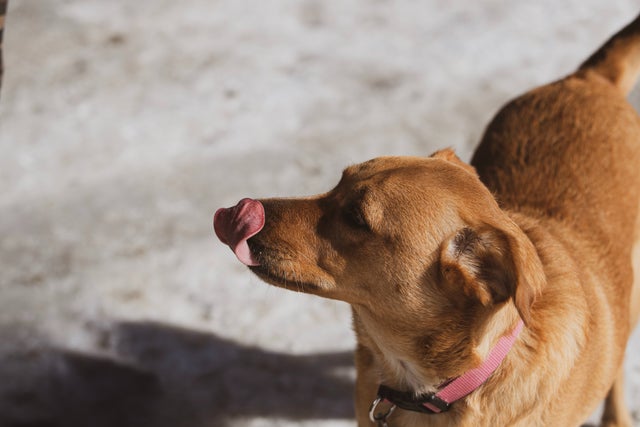From food to cleaning supplies, here are some things in our homes that can be harmful to dogs.
1. Human Toothpaste
Most human toothpastes contain an artificial sweetener called xylitol, which is toxic to your dog. Xylitol can cause your dog’s blood sugar to drop and damage your dog’s liver. Be sure to keep toothpaste out of reach, and when you brush your dog’s teeth, use toothpaste without xylitol. There are many brands available made specifically for pets. Check with your veterinarian for the best recommendations.
2. Aloe
Though a common house plant, aloe vera is one of many harmful plants for your dog. If ingested, compounds inside the aloe vera plant can cause vomiting and diarrhea. If you do have aloe plants in your house, make sure they are kept elevated where your dog can’t reach them.
3. Bananas
Bananas aren’t all bad for your dog. The danger with bananas, and all fruits, is their high sugar content. If your dog has too much sugar, it could cause problems with weight gain. If you want to give your dog a slice or two as a treat, that should be perfectly fine.
4. Chocolate
Any form of chocolate or cacao is poisonous to dogs. There are two compounds that are particularly harmful when it comes to chocolate: theobromine and caffeine. Unlike humans, dogs’ bodies are not able to readily metabolize theobromine and caffeine, making them more susceptible to the effects of the two chemicals.
5. Tulips
Though pretty in a garden, tulip bulbs contain a toxin that can irritate your dog’s gastrointestinal tract. If consumed, this toxin can cause vomiting and diarrhea in your dog. Be sure to keep your dog away from your garden if you have tulips, or consider replanting them somewhere your dog won’t have access to them.
6. Fabric Softener Sheets
Some people use fabric softener sheets or dryer sheets to control shedding. But the chemicals in these sheets are harmful to your dog.
7. Batteries
If you’re swapping out some batteries in a flashlight or TV remote, be sure to keep them out of your dog’s reach. Even though batteries have a hard exterior, your dog’s teeth could easily puncture the outer shell of the battery, potentially exposing them to the acid inside. Battery acid can cause mouth burns, stomach ulcers and other serious damage to your dog’s insides if swallowed.
When in doubt, it’s best to keep things away from your dog. Even if an unknown leaf or piece of food may end up being okay, keeping unknown things out of your dog’s mouth will ensure that your dog stays safe.




